- Trips
- Tour Calendar
- About Our Tours
- Plan a Trip
- Book a Trip
- About Us
- Contact Us


The Alps, located in Europe, is one of the most popular destinations in the world for a variety of outdoor activities including hiking, trekking, climbing, and skiing. This incredibly massive mountain range stretches across 8 countries: France, Monaco, Switzerland, Italy, Liechtenstein, Germany, Austria, and Slovenia. The Alp's top ten tallest peaks are almost all located in Switzerland with the exception of Mont Blanc being in France and Italy, and both Monte Rosa and Liskamm being shared by Italy and Switzerland. Many of Alpenwild's tours allow for viewing of these peaks.
.jpg)
Mont Blanc is the highest peak in the Alps and in Europe, reaching a lofty 4,804 meters (15,774 ft) above sea level. The massif is located in the Graian Alps and lies within France, Switzerland, and Italy. Tourists from all around the world travel to see this glacier-flanked peak. The most popular trek in Europe, the Tour du Mont Blanc, is a circumambulation of the Mont Blanc Massif and gives avid hikers a chance to enjoy the beauty of Mont Blanc as they travel around it, crossing through three countries—France, Italy, and Switzerland.
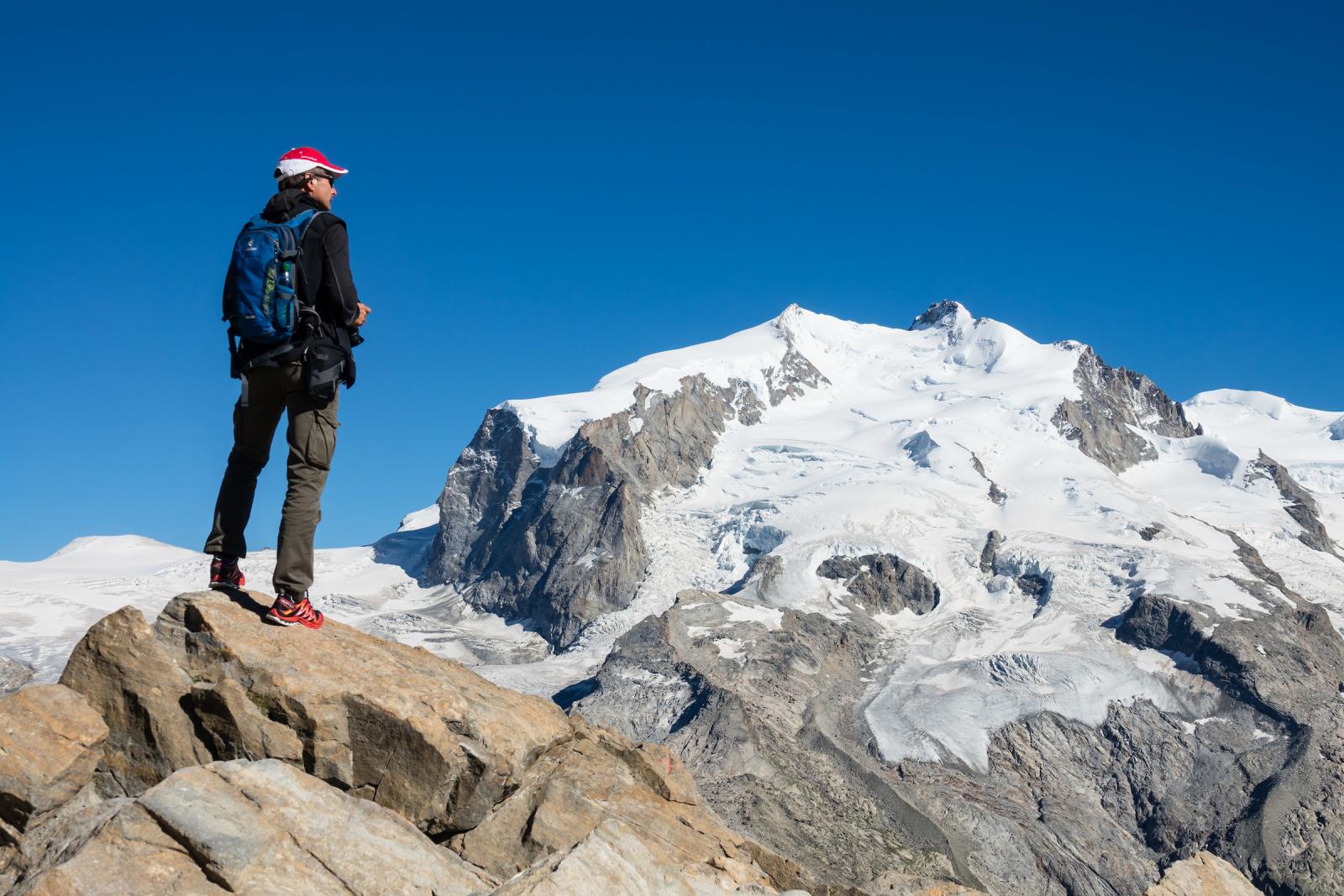
Monte Rosa is a massif comprised of several peaks. The highest peak in this range (Dufourspitze) has an elevation of 4,634 meters (15,203 ft), claiming the title of Switzerland’s highest peak. It’s located in the eastern part of the Pennine Alps on the border with Italy. The other peaks in this range are Dunantspitze (4,632 m), Grenzgipfel (4,618 m), and Nordend (4,609 m).
The Tour de Mont Rosa is a difficult trek that circles Monte Rosa, crossing through both the Swiss and Italian Alps. It offers fantastic views of this massive peak. Another popular area to view Monte Rosa is the Gornergrat, a ridge that overlooks more than twenty 4,000 meter peaks as well as the Gorner Glacier. This can be reached from Zermatt by the Gornergrat Railway.
The first ascent was completed August 1, 1855, by a team of Swiss and English climbers. During the summer months, many mountain climbers flock to the base of Monte Rosa hoping to reach its summit.
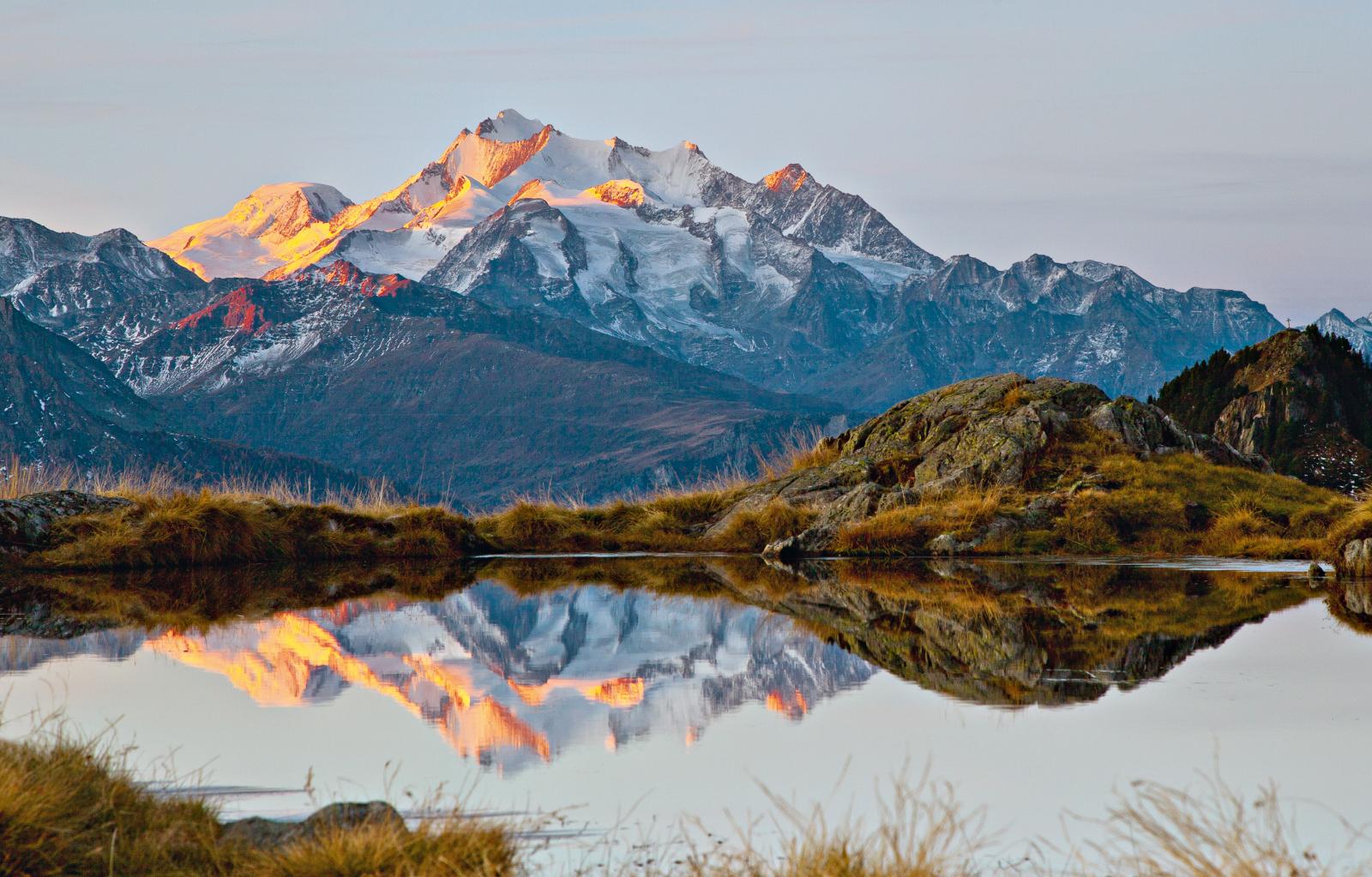
Located near Monte Rosa, Dom stands at 4,545 meters (14,911 ft) and can also be viewed from the Gornergrat. Dom is known as one of the “easier” tall peaks in the Alps to summit because of it’s straightforward routes. It was first climbed in 1858.
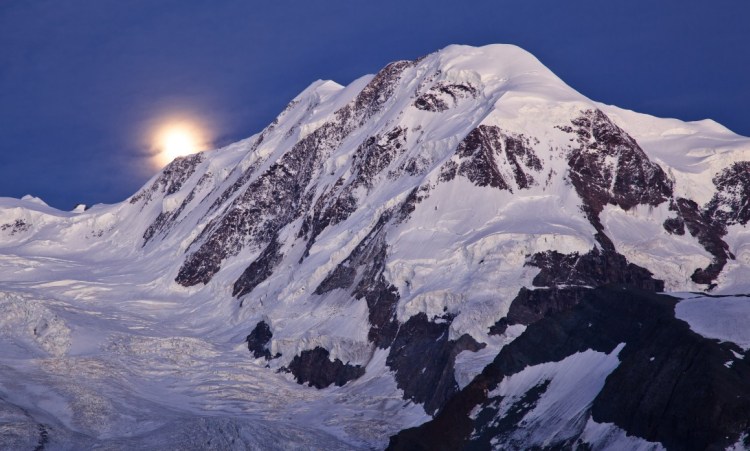
Liskamm reaches 4,527 meters (14,852 ft) above sea level, and is located in the Pennine Alps on the border of Switzerland and Italy. Its first ascent was completed by a 14-man team in 1861. Before this, many men fell to their death from the cornices (overhanging edges of snow) along the ridgelines. It is known for its frequent avalanches, and is nick-named Menschenfresser—meaning “people eater.”
Climbers today must be very cautious of the conditions before attempting to climb, as they greatly affect the difficulty of summitting.
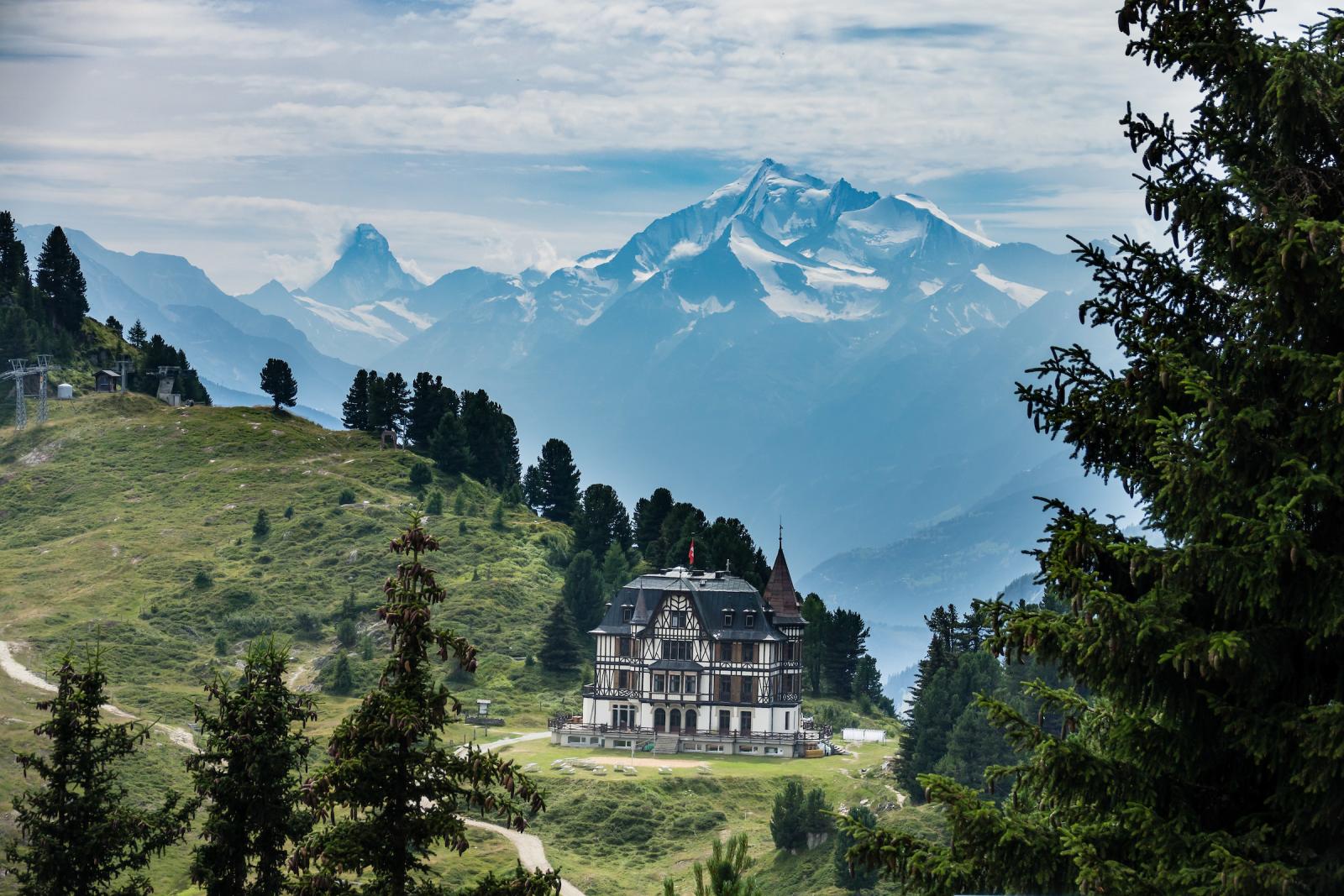
The Weisshorn, located near the Matterhorn in the Pennine Alps, has an elevation of 4,506 meters (14,783 ft). Its jaw-dropping beauty deserves fame comparable to the Matterhorn, but this peak does not see nearly as many visitors. If you’re looking to summit the Weisshorn, it is a quite difficult and technical climb on both rock and snow.
.jpg)
The Matterhorn, towering at 4,478 meters (14,692 ft), is arguably the most recognizable and iconic peak in the world. Each year millions of travelers come to Zermatt, Switzerland just to view the Matterhorn. From Zermatt, there are many close-by day hikes that allow for incredible views of this majestic peak. The Chamonix-Zermatt Haute Route, a 12-day trek which begins in Chamonix and ends in Zermatt, also gives hikers amazing views of the Matterhorn.
Since its first ascent in 1865 the Matterhorn has been a highly-prized peak for alpine mountaineers. Each year, about 3,000 people climb the Matterhorn. The climb is not the most difficult, but it is very exposed and subject to rockfall. If you’re looking to climb it, make sure to find a guide that knows the mountain well.
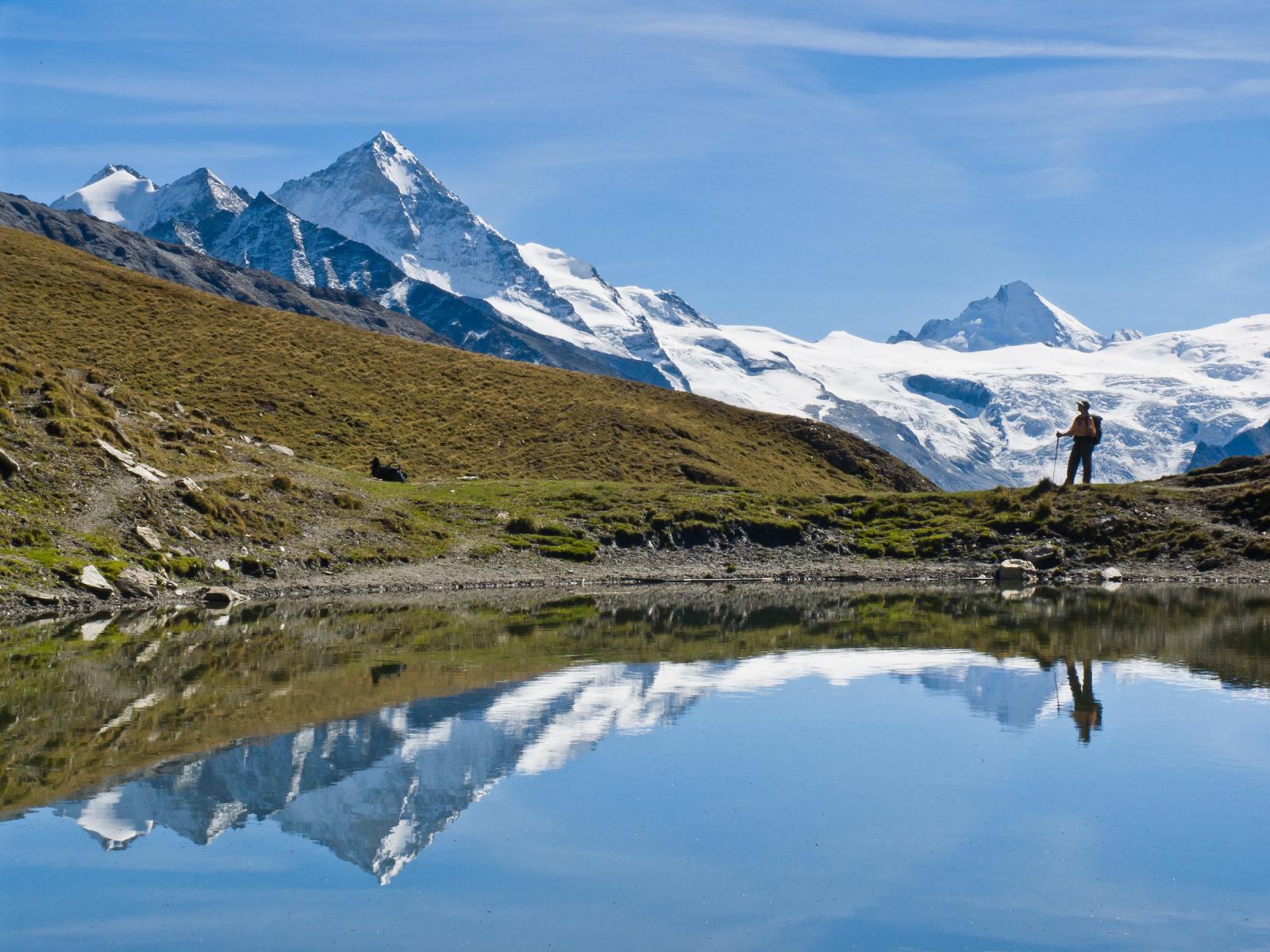
Dent Blanche has an elevation of 4,357 meters (14,295 ft), and is also located in the Zermatt region, and is easily viewed from the Gornergrat. It’s first ascent was in July of 1862. Dent Blanche is one of the most difficult climbs of the 4,000+ meter peaks in the Alps.
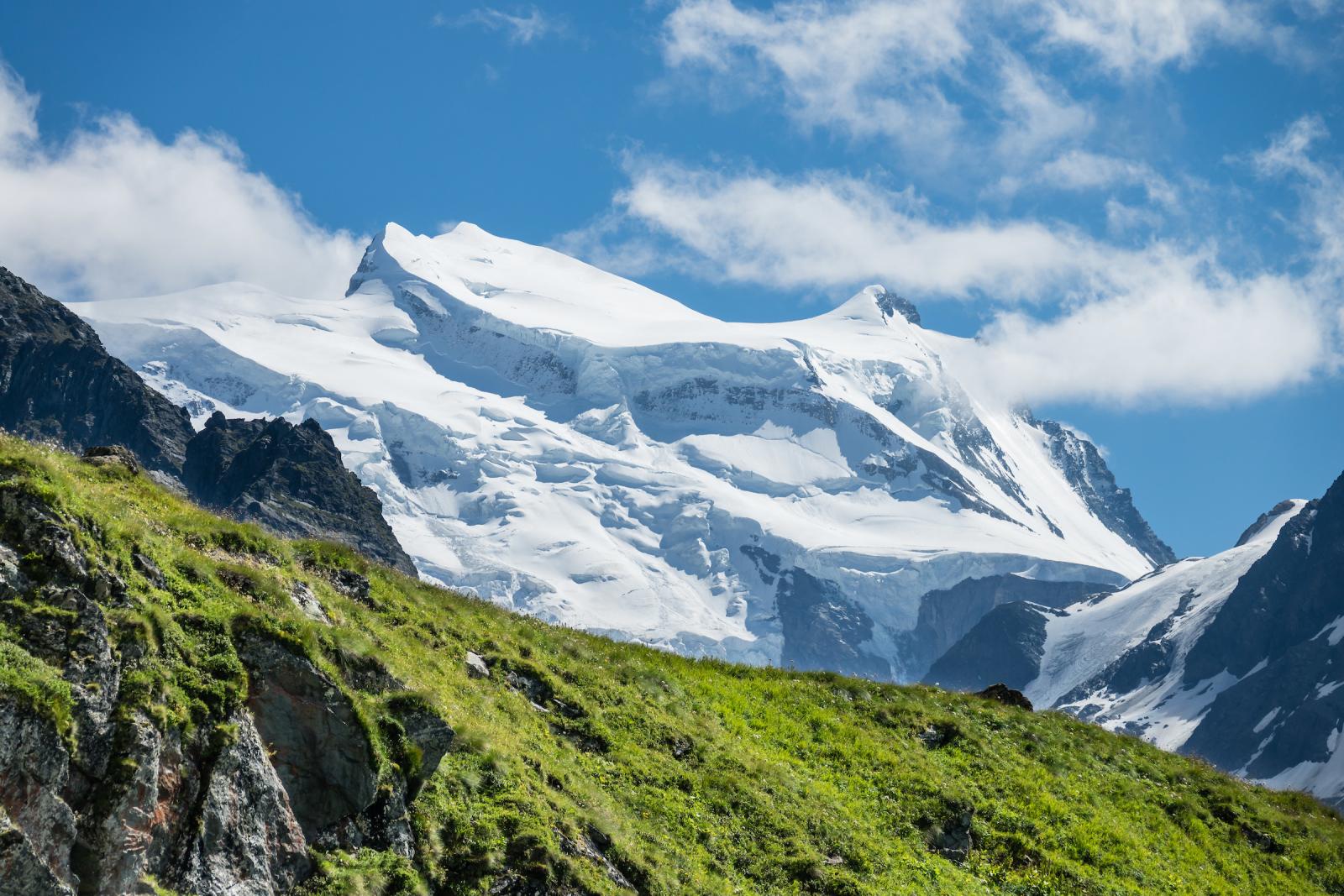
The Grand Combin, located in the western Pennine Alps, stands at 4314 meters (14,154 ft). The first ascent was in 1859. The Grand Combin is also a very difficult climb, presenting many dangers such as icefall and avalanches.
.jpg)
Located in the Bernese Alps in Switzerland, the Finsteraarhorn sits at 4,274 meters (14,022 ft) above sea level, and can be seen from almost 100 miles away. It is the third most prominent peak in the Alps, surrounded by beautiful glaciers and rock faces, but surprisingly is not very popular among tourists. The first ascent of the Finsteraarhorn was in August of 1857.
There are several routes available for climbers to choose from, the easiest being the “normal route.” During the winter months, the Finsteraarhorn is a popular destination for skiing.
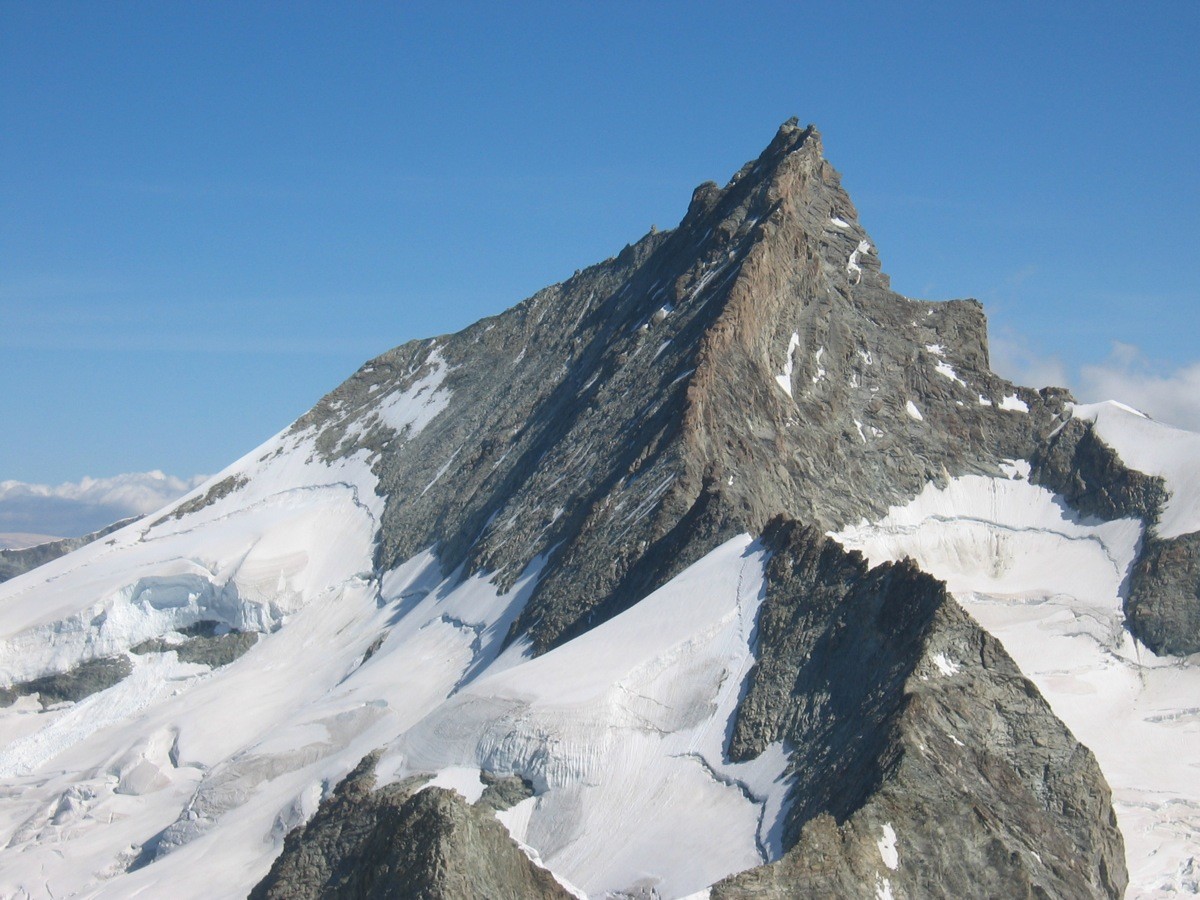
The Zinalrothorn is 4,221 meters tall (13,848 ft), sitting right in-between the Weisshorn and the Matterhorn, and is easily viewed from the Gornergrat. It was first climbed in August of 1864. Climbers enjoy great rock quality and a variety of straightforward routes to summit the peak.
.png)